Independent researcher Michael S. Bar-Ron claims to have found the Proto-Sinaitic signature of Moses at the site of an ancient Egyptian turquoise mine on the Sinai Peninsula.
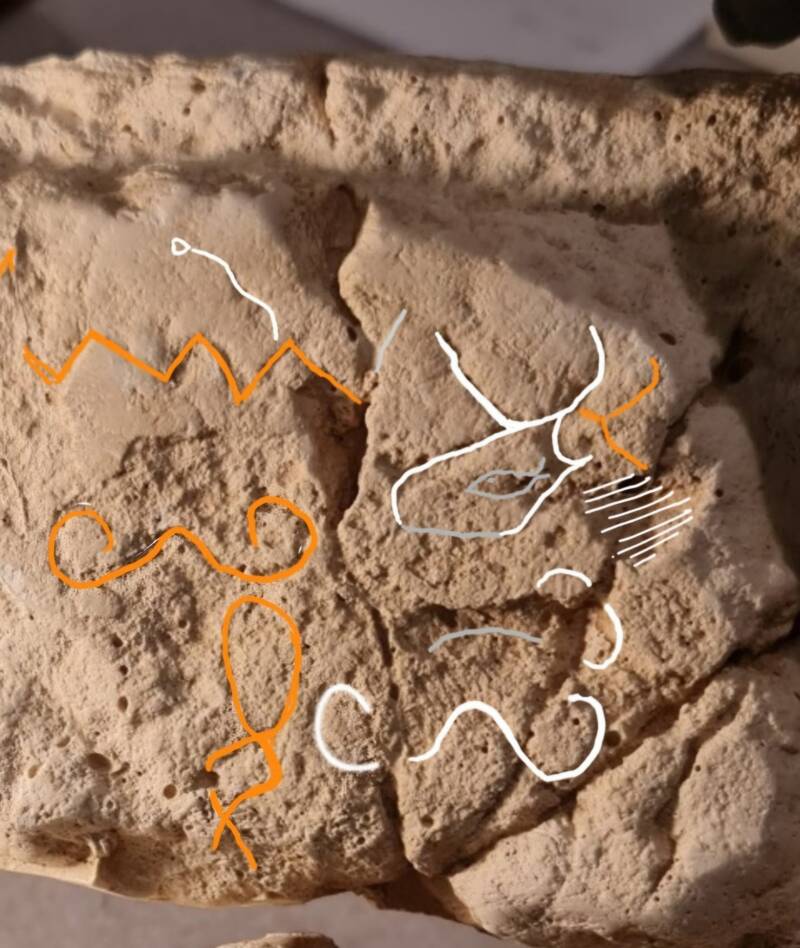
Michael S. Bar-RonA scan of Proto-Sinaitic inscriptions, perhaps worshiping the Israelite deity El, that were found at Serabit el-Khadim, along with the possible signature of Moses.
Ancient inscriptions dating back to Egypt’s 12th Dynasty may have been written by Moses, the Hebrew prophet who led the Israelites out of slavery during the Exodus from Egypt, according to a new proto-thesis from independent researcher Michael S. Bar-Ron.
After eight years of epigraphic analysis, Bar-Ron believes that two inscriptions at the ancient turquoise mining site of Serabit el-Khadim contain the phrase, “This is from MŠ,” which may have been an early rendering of the name Moses.
If Bar-Ron’s hypothesis is correct, this would mark the first inscriptional evidence of Moses as an historical figure outside of the Bible. Even setting aside religious implications, such a discovery would be a major revelation for scholars around the world.
Proto-Sinaitic Inscriptions Found In Egypt May Include Moses’ Signature
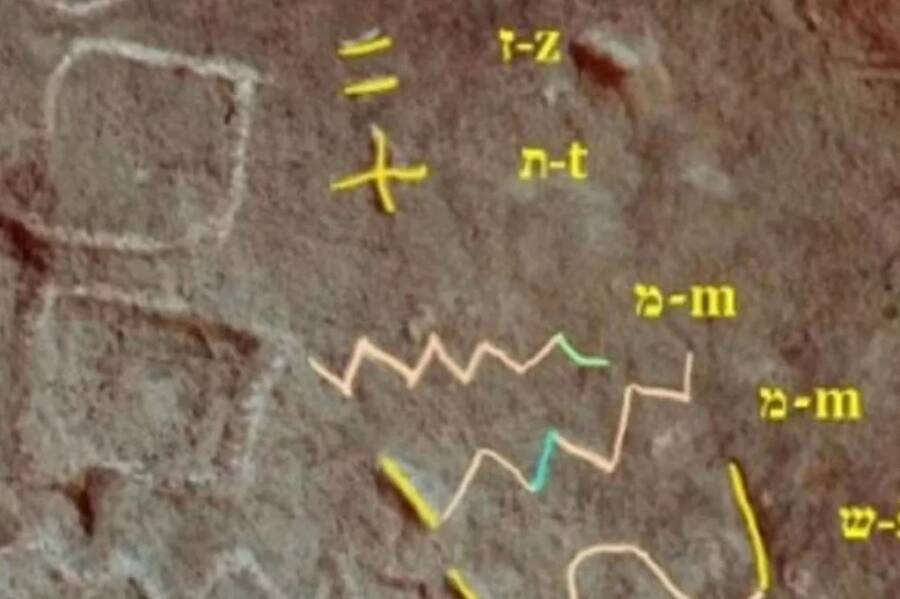
Johannes Gutenberg University MainzThe ancient inscription that, according to Bar-Ron, reads, “This is from Moses.”
Bar-Ron’s research, utilizing high-resolution images and 3D scans, focused primarily on two sets of inscriptions found at Serabit el-Khadim on the Sinai Peninsula.
These inscriptions — called Sinai 357 and Sinai 361 — were written in Proto-Sinaitic, considered history’s earliest known alphabetic script. In his paper, Bar-Ron outlines how the Proto-Sinaitic alphabet evolved from Egyptian hieroglyphs, which were then adapted to represent Semitic sounds.
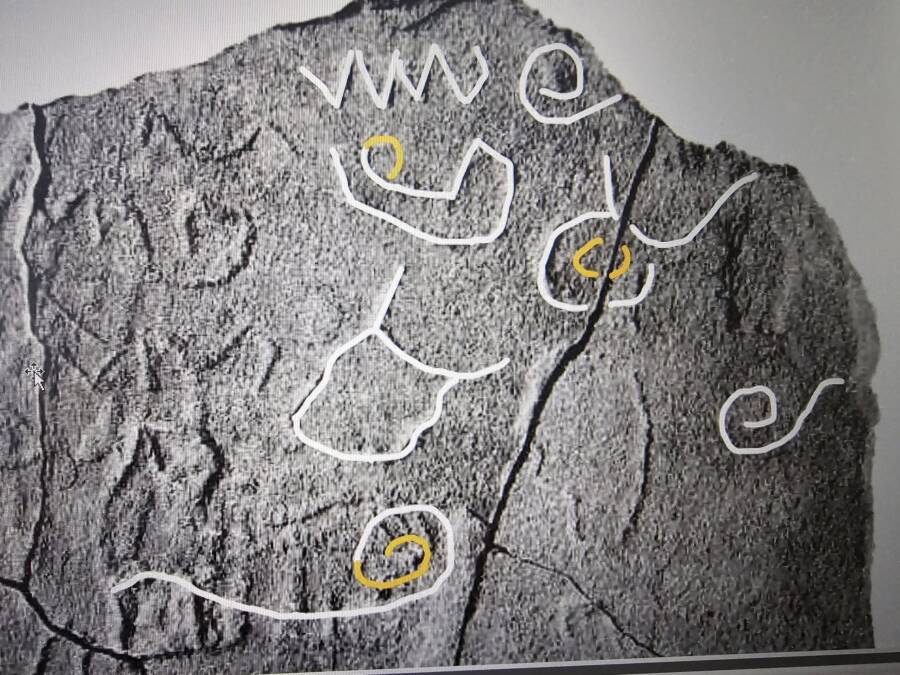
Michael S. Bar-RonBar-Ron’s scan of a Serabit el-Khadim inscription, with notes identifying pieces of this ancient writing.
In the inscriptions, there were two marks that Bar-Ron interpreted as indications of personal authorship: “ZT MMŠ” (This is from MŠ) and “NʾUM MŠ” (A saying of MŠ). The nearby inscriptions Sinai 374 and Sinai 351 bear similar marks next to them.
“In all four, the names are to the right of the main inscription, somewhat lower down, and either descend away from the main text, or bear glyphs facing the opposite direction of the main text,” Bar-Ron writes. “…To me this broader view suggests these to be signatures of the author.”
Additionally, Bar-Ron argues that the inscriptions share a linguistic style, personal tone, and poetic structure indicating origins from a single Semitic scribe who had great knowledge of Egyptian hieroglyphs. The Bible says Moses was raised in the pharaoh’s palace, so that would be consistent with Bar-Ron’s claims here.
Ancient Evidence Of Religious Tensions Between Egyptians And Israelites
Further evidence of a connection to the Israelites can be found via other nearby inscriptions containing references to “El,” a deity associated with early Hebrew worship.
There are also signs of the Egyptian goddess Hathor being disgraced, an indicator of social and religious tensions between the two groups. Other inscriptions praise the Canaanite goddess Ba’alat, who was linked to Hathor, which were then scratched over by worshipers of El.
Nearby, historians had previously identified the remains of a burnt temple dedicated to Ba’alat, offering further evidence of a religious rebellion, likely led by followers of El. Inscribed phrases like “nimosh” — or, “let us depart” — suggest the writers were recording the Exodus narrative in real-time.
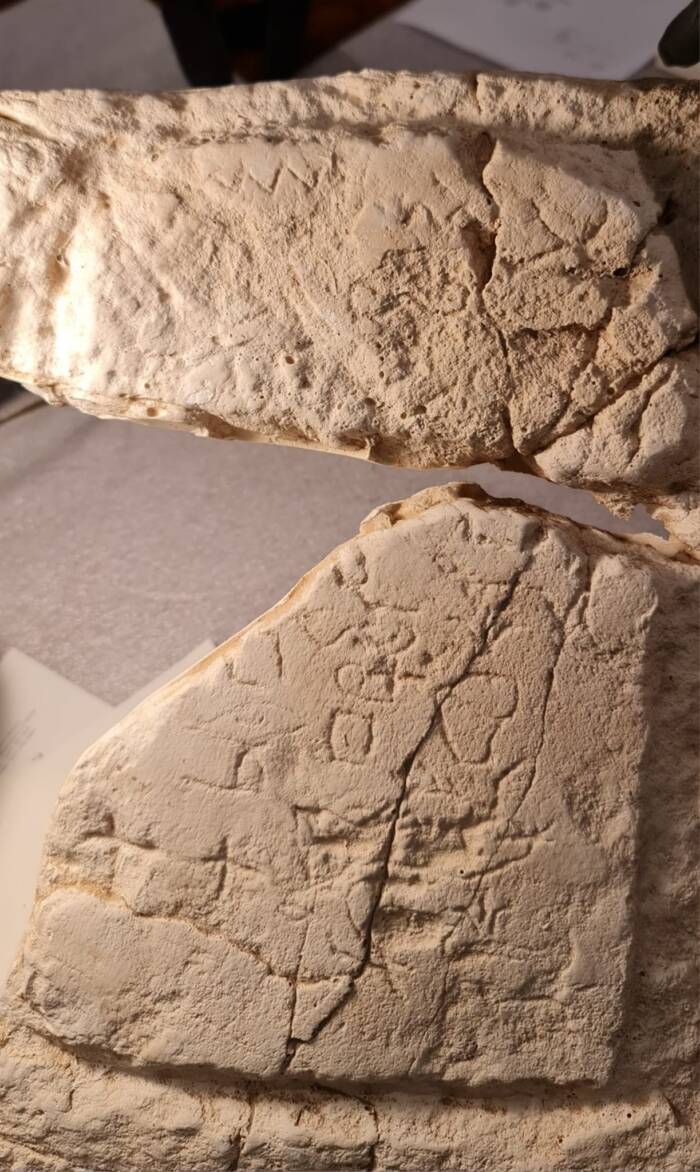
Michael S. Bar-RonMore examples of Proto-Sinaitic writing, the world’s earliest alphabet.
Another nearby structure, the Stele of Reniseneb, and a seal of an Asiatic Egyptian high official are additional signs of a significant Semitic presence. Bar-Ron further suggested that this could provide a link to the biblical figure Joseph, a high-ranking official in the pharaoh’s court who began as a slave.
“This may suggest a Joseph-like official of the pharaoh’s court, perhaps the Semitic Vizier Ankhu,” Bar-Ron writes. “Evidence for a Semitic presence in the court of this ruler is bolstered by Sinai 350… This evidence is in the form of a logogram in its upper righthand corner.”
Bar-Ron’s work has not been peer-reviewed, however, and not all scholars are convinced. Some have even pushed back against the research.
Controversy Surrounding The Proto-Thesis About The Possible Moses Inscription
Part of the issue is that, while Proto-Sinaitic is the earliest known alphabet, its characters are incredibly difficult to decipher. As such, there is always the chance that Bar-Ron misinterpreted the message.
Per The Daily Mail, University of British Columbia professor and Egyptologist Dr. Thomas Schneider labeled Bar-Ron’s claims as “completely unproven and misleading,” adding that “arbitrary identifications of letters can distort ancient history.”
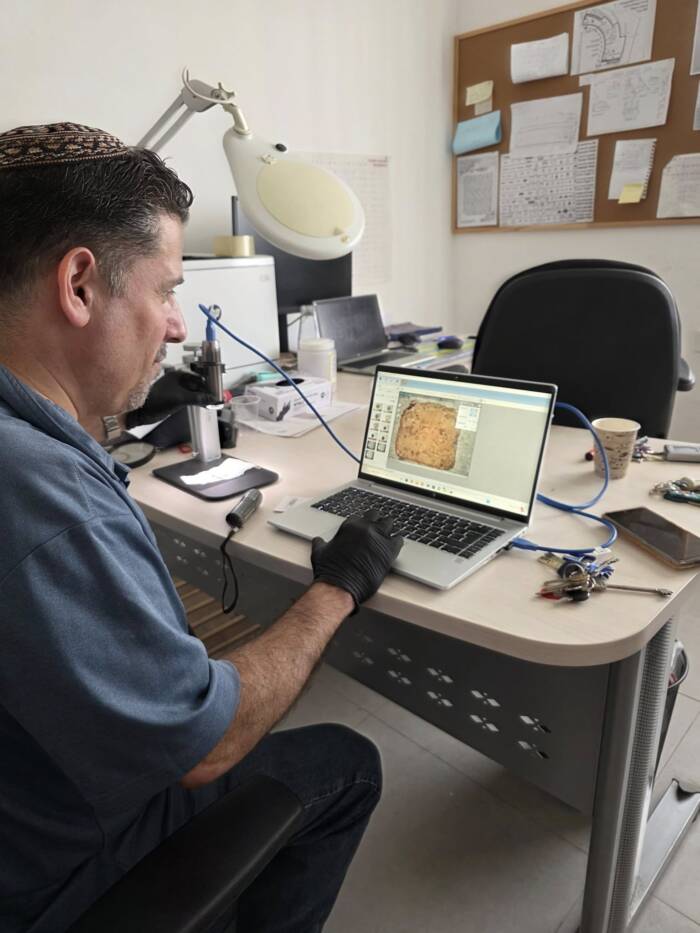
Michael S. Bar-RonResearcher Michael S. Bar-Ron looking over scans of the inscriptions.
Meanwhile, Bar-Ron’s academic advisor, Dr. Pieter van der Veen, confirmed Bar-Ron’s reading and defended the research.
“Michael is doing an extremely careful job at this,” he told Patterns of Evidence. “He’s very self-critical and he’s trying to prove himself wrong. This is the only scholarly approach that I could recommend. If anything is to result from this in terms of early Israelite history, then it’s going to be through this type of high level work.”
In the proto-thesis and in interviews, Bar-Ron emphasized that his work is not yet finished — and that he hopes to find evidence to convince even the most skeptical scholars.
“I took a very critical view towards finding the name ‘Moses’ or anything that could sound sensationalist,” he said. “In fact, the only way to do serious work is to try not to find elements that seem ‘Biblical,’ but to struggle to find alternative solutions that are at least likely… One motive for what I do is to honestly see if there is actual extraordinary evidence that anyone, who is trained, would be able to recognize.”
For now, the debate over Bar-Ron’s findings continues.
After reading about the possible signature of Moses, dive into the complex history of who wrote the Bible and when. Then, learn about what angels actually looked like as described by the Bible.





